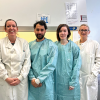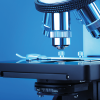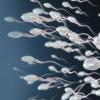A review of the early historical development and use of chemotherapy to treat different cancers. The phrase “war on cancer” refers to the recognition of cancer as a major cause of death and the need to act, resulting in increased funding, clinical trials and the development of more effective treatments.
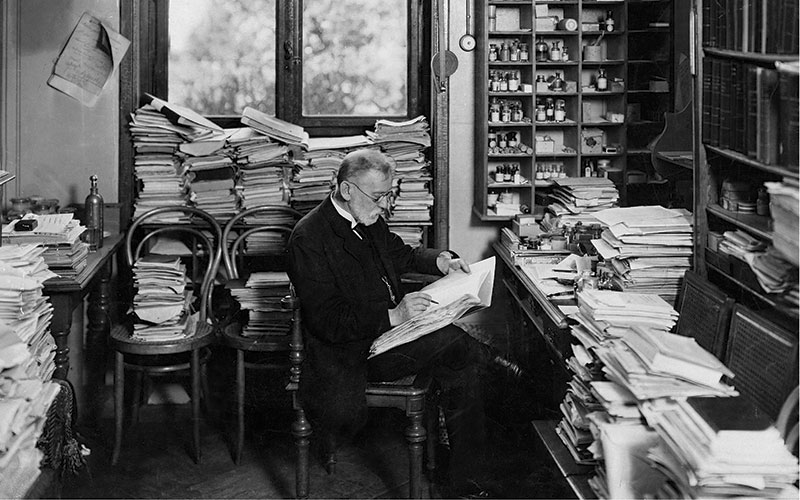
The Nobel laureate, German scientist Paul Ehrlich (1854-1915) pioneered chemotherapy during the early 20th Century. He coined the term “chemotherapy” and researched a large number of chemicals to screen their effectiveness in the treatment of infectious diseases, those succeeding he described as “magic bullets”. He was also one of the first to use animal models for chemical research, which would much later be used to screen chemicals using transplantable tumours in a range of animals. In addition, he also experimented with aniline dyes and simple alkylating agents in cancer treatment.
Cancer chemotherapy may be broadly defined as often a cyclical process to deliver a chemical agent (CA) or cocktail of chemical agents to selectively target and destroy cancer cells. At this time a vast range of CA have been developed to optimise this process in different modes, such as adjuvant chemotherapy, based on the type and stage of cancer, response rate, individual patient status and tolerance and with a view to minimise toxic side effects. Standard protocols have now been developed for most types of cancer managed by a consultant oncologist. These advances could not have been achieved without a vast amount of dedicated research over the last 70 years.
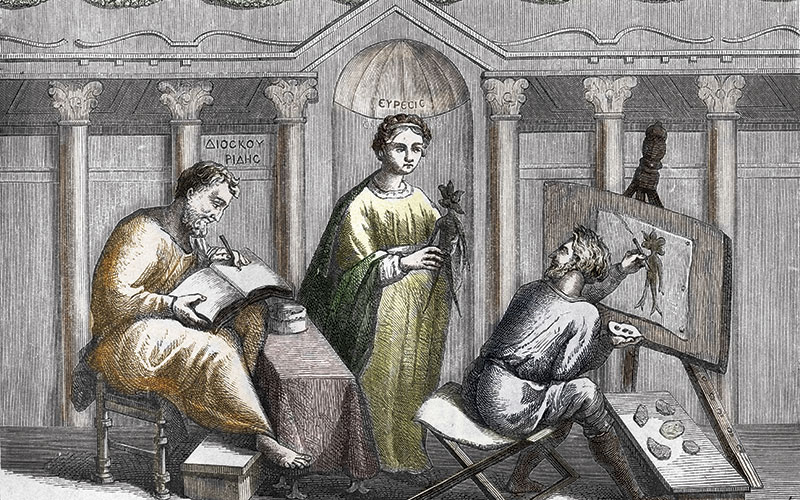 Ancient medicine
Ancient medicine

There is some evidence from Egyptian papyri that suggests herbal preparations were used topically in malignant diseases. The Greek physician and pharmacologist, Dioscorides produced De Materia Medica around 70 AD – a five-volume compendium of the medicinal properties of plants and minerals, including some which were used for the topical treatment of cancer.
Around the same period, traditional Chinese medical procedures were using herbal remedies for cancer treatment. Surveys show a long history of herbal preparations, which continues today in cancer patients as alternative or complementary treatment. It should be noted that some studies have demonstrated positive responses in prostate, lung cancer and non Hodgkin’s lymphoma.
Arsenic salts
In view of their toxic nature it is perhaps surprising that arsenic salts have been used therapeutically for over 2,000 years. Most literature sources record its first use as 1865 by Lissauer, using Thomas Fowler’s solution of arsenic trioxide in sodium bicarbonate (1% w/v), to clinically improve a patient with chronic myelogenous leukaemia (CML). A report from Boston City hospital in 1878 of an arsenic trioxide treated patient with CML includes some haematology results showing a reduced white cell count with this regime. During the next decade arsenical pastes were used for cancers of skin and breast. The introduction of radiotherapy in the early 20th Century reduced the use of arsenic salts.
However, great interest has been generated by reports from Chinese studies in 1996, which show successful clinical and haematological results in acute promyelogenous leukaemia (APL) with low dose arsenic trioxide, without bone marrow suppression and few side effects. These findings were confirmed by US randomised clinical studies and the commercial form, Trisenox, was approved for use by Federal Drug Agency in 2000 for refractory or relapsed APL.
A number of theories have been proposed for the mechanism of action of arsenic trioxide in cancer. These include induction of apoptosis, antiproliferation and inhibition of angiogenesis using a specific cell line (NB4) derived from the bone marrow of a patient with APL. Waxman and Anderson from the US in their 2001 review of arsenic derivatives in cancer, provide more details on these complex mechanisms. More recent studies in 2015 propose that arsenic trioxide inhibits an enzyme (PIN1) – a key regulator in oncogenic signalling pathways and used with retinoic acid, may be of clinical value in triple negative breast cancer.
Mustard gas
“Records estimate there were 6,000 fatalities and 185,000 injuries due to mustard gas”
Mustard gas (MG) is the collective name for a group of toxic chlorinated hydrocarbons with a sulphur or nitrogen atom, thus nitrogen mustard is (methyl bis) (beta chlorethyl) (amine hydrochloride) or more simply mechlorethamine. It was first synthesised in 1860, and the sulphur form was used as a dispersed mist during World War 1 to attack occupied trenches. It is extremely irritant to mucous membranes, may form painful skin blisters and severe respiratory tract damage which may lead to potentially fatal bronchopneumonia.
Imperial War Museum records estimate there were 6,000 war fatalities and 185,000 injuries due to mustard gas and an inestimable numbers of soldiers suffered long-term mental health issues. MG causes suppression of haemopoiesis and was more fully examined in 1919 by US Pathologist Edward Bell Krumbhaar, leading a research team at the University of Pennsylvania who reported low white counts and that autopsy revealed lymphoid atrophy and bone marrow hypoplasia.
Thus its potential was recognised for cancers affecting lymphoid and myeloid proliferation, further studies were made by James Ewing, and also Frank Adair and Halsey Bagg in 1931 to test its suitability for other cancers. With the advent of World War 2 more research was undertaken, most notably by young US pharmacologists Alfred Gilman, Louis Goodman and their co-workers Frederick Philips and Roberta Allen. Due to wartime security the reports of their work were not published until 1946. Gilman and Phillips reviewed the chemical, pharmacological, toxicological characteristics and animal experimentation results with mustard gas.
The first clinical application took place in 1942 at Yale on a radiation-resistant patient with lymphosarcoma given 0.1mg/Kg i.v. daily, who showed a dramatic improvement with easing of obstructive symptoms due to tumour masses. However, it proved to be a temporary remission and tumours returned.
Further clinical trials were conducted at several centres in the US on a range of patients with different cancers-mainly Hodgkin’s disease, lymphosarcoma and various types of leukaemia. The authors reported cautious optimism for these conditions but it was found there were serious limitations for other cancers.
The nitrogen mustard, mustargen was approved by the FDA in 1949 for a defined range of cancers and may be used today in combination chemotherapy for notably Hodgkin’s lymphoma. MG is an alkylating agent and is an effective CTA by forming covalent bonds with nucleic acids or key proteins forming crosslinks and interferes with enzymes involved in DNA replication.
Folic acid antagonists
In landmark studies reported in 1931, English haematologist Lucy Wills assessed the effect of diet changes on albino rats with induced macrocytic anaemia and found it was prevented by adding yeast extracts to a diet otherwise lacking B vitamins. In subsequent studies it was shown that a factor in yeast extract (“Marmite”) added to the diet was also found to correct macrocytic anaemia in human pregnancy. Thus an association between a dietary new factor and bone marrow function and erythropoiesis was established. This was also shown to be present in animal liver and green leafy vegetables and identified as folic acid by isolation from spinach leaves in 1941 and its structure determined in 1945. The availability of folic acid provided an opportunity for further research into its physiological role and metabolism.
Sidney Farber, a leading pioneer US paediatric pathologist at Harvard Medical School and Boston Children’s Hospital, had many clinical interests, notably acute lymphoblastic leukaemia (ALL) in childhood, to improve the very poor prognosis. Previous studies had shown the clinical value of folic acid in anaemia with some similar haematological features to ALL, however, folic acid treatment failed and results even suggested that folic acid allowed further proliferation of cancer cells in leukaemia.
In 1947 Farber conducted a clinical trial with the folate antagonist aminopterin in an attempt to block the action of folic acid and 10 of 16 children showed a temporary remission. Farber collaborated with Harriet Kilte of Lederle Laboratories to produce other folate antagonists, notably methotrexate, and demonstrated that antifolates could suppress the proliferation of malignant cells and re-establish normal bone marrow function.
Concluding comments
The principle of using such toxic substances as arsenic salts and nitrogen mustards in cancer treatment now seems extreme. The latter was a belated follow-up of autopsy evidence from World War I soldiers exposed to mustard gas. The discovery of the link between folic acid and bone marrow function and erythropoiesis provided the inspiration to use folate antagonists to treat children with ALL. It is also worthy to note that only temporary remissions were achieved with these early agents.
Nevertheless, Paul Ehrlich, Edward Krumbhaar, Alfred Gilman and Louis Goodman with their Yale colleagues and Lederle Laboratory collaborators, and Sidney Farber laid the foundations for chemotherapy in the first half of the 20th Century and there was cautious optimism for the future of chemotherapy.
Stephen Clarke is a retired IBMS Fellow.
Image credit | Getty
References
1. DeVita VT Jr, Chu E. A history of cancer chemotherapy. Cancer Res 2008; 68(21): 8643-8653
2. Papac RJ Origins of cancer therapy. Yale J Biol Med 2001; 74: 391-398
3. Liu J, Wang S, Zhang Y et al. Traditional Chinese medicine in cancer: History, present situation and development. Thorac Cancer 2015; 6(5) : 561-569
4. Olaku O. Herbal therapy use by cancer patients: A literature review on case reports. Eur J Cancer 2011; 47(4): 508-514
5. Bassiouny AR, Atteya MA, El-Rashidy FH et al. Curcumin and EGCG suppress apurinic/apyrimidinic endonuclease I and induce complete remission in non Hodgkin’s lymphoma. Functional foods in health and disease 2011; 1(12): 525-544
6. Antman KH. Introduction: The history of arsenic trioxide in cancer therapy. The Oncologist 2001; 6 Suppl 2: 1-2
7. Zhang P, Wang SY, Hu XH. Arsenic trioxide treated 72 cases of acute promyelogenous leukaemia. Chin J Haematol 1996; 17: 58-62
8. Soignet SL, Maslak P, Wang Z-G et al. Complete remission after treatment of acute promyelogenous leukaemia. New Eng J Med 1998; 339: 1341-1348
9. Waxman S, Anderson KC. History of the development of arsenic derivatives in cancer therapy. The Oncologist 2001; 6 Suppl 2: 3-10
10. Kosono S, Lin YM, Seo HS et al. Arsenic targets PIN1and cooperates with retinoic acid to inhibit cancer driving pathways and tumor initiating cells. Nature Communications 2018; 9: 1-17
11. Krumbhaar EB. Role of the blood and the bone marrow in certain forms of gas poisoning 1 peripheral blood changes and their significance. J Amer Med Assoc 1919; 72: 39-41
12. Gilman A, Philips FS. The biological actions and therapeutic applications of the B-chloroethyl amines and sulphides. Science 1946; 103: 409-415
13. Gilman, A. The initial clinical trial of nitrogen mustard. Am. J. Surg. 105:574-578, 1961.
14. Goodman LS, Wintrobe MM, Dameshek W et al. Nitrogen mustard therapy. Use of methyl(bis)(beta chlorethyl) amine hydrochloride for Hodgkin’s disease, Lymphosarcoma, leukaemia, and certain allied and miscellaneous disorders J Amer Med Assoc 1946;132 : 126-132
15. Wills L. Treatment of ‘pernicious anaemia’ of pregnancy and ‘tropical anaemia’ with special reference to yeast extract as the curative agent. BMJ 1931; 1: 1059-1064
16. Wills L, Clutterbuck PW, Evans BDF. A new factor in the production and cure of certain macrocytic anaemias. Lancet 1937; 229: 311-314
17. Mitchell HK, Snell EE, Williams RJ. The concentration of folic acid. J Am Chem Soc 1941; 63(8): 2284-2284
18. Simone JV. Curing paediatric acute lymphoblastic leukaemia. In ’50 years in haematology’ 2008 Chapter 2: 11-13 American Society of Haematology.
19. Farber S, Diamond LK, Mercer RD et al. Temporary remissions in acute leukaemia in children produced by the folic acid antagonist 4-aminopteroyle-glutamic acid (aminopterin). New Engl J Med 1948; 238: 787-793

